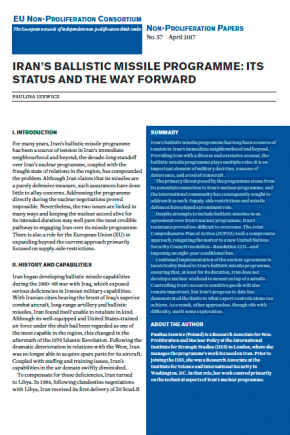Iran's Ballistic Missile Programme: Its Status and the Way Forward
Iran’s ballistic missile programme has long been a source of tension in Iran’s immediate neighbourhood and beyond. Providing Iran with a diverse and extensive arsenal, the ballistic missile programme plays multiple roles: it is an important element of military doctrine, a means of deterrence, and a tool of statecraft.
The primary threat posed by the programme stems from its potential connection to Iran’s nuclear programme, and the international community has consequently sought to address it as such. Supply-side restrictions and missile defences have played a prominent role.
Despite attempts to include ballistic missiles in an agreement over Iran’s nuclear programme, Iran’s resistance proved too difficult to overcome. The Joint Comprehensive Plan of Action (JCPOA) took a compromise approach, relegating the matter to a new United Nations Security Council resolution—Resolution 2231—and imposing an eight-year conditional ban.
Continued implementation of the nuclear agreement is inextricably linked to Iran’s ballistic missile programme, ensuring that, at least for its duration, Iran does not develop a nuclear warhead to mount on top of a missile. Controlling Iran’s access to sensitive goods will also remain important, but Iran’s progress to date has demonstrated the limits to what export controls alone can achieve. As a result, other approaches, though rife with difficulty, merit some exploration.

